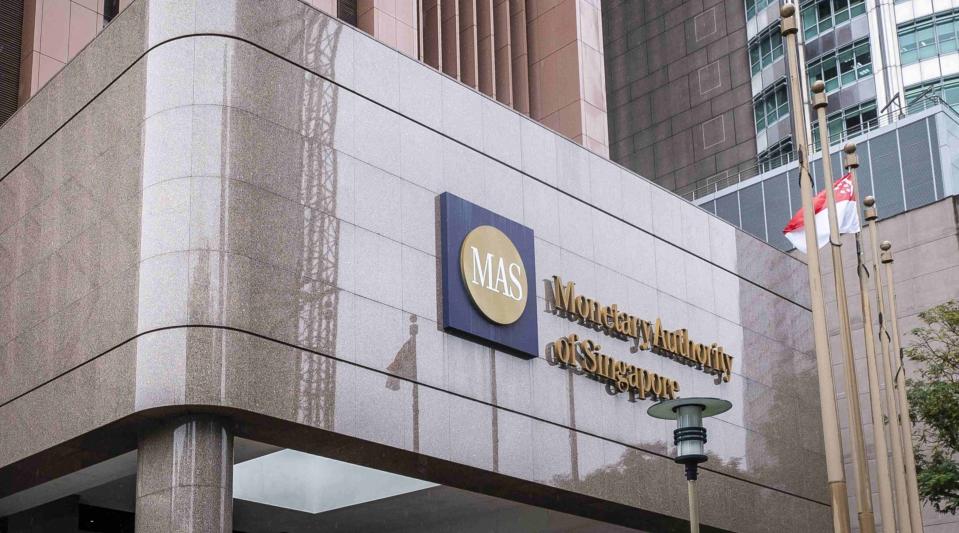MAS maintains S$NEER policy band in January monetary policy statement

MAS had tightened its monetary policy five consecutive times since October 2021 before leaving its parameters unchanged in April.
The Monetary Authority of Singapore (MAS) has maintained the prevailing rate of appreciation of the Singapore dollar nominal effective exchange rate (S$NEER) policy band, which helps maintain the relative strength of the Singdollar. This comes amid better growth prospects this year, as well as the ongoing need to keep tabs on inflationary pressures.
According to the central bank in its Jan 29 policy statement, there will be no change to the width of the band or level at which it was centred. This follows an unchanged band at the last monetary policy statement (MPS) in October 2023. MAS had tightened its monetary policy five consecutive times since October 2021 before leaving its parameters unchanged in April 2023.
Current monetary policy settings remain appropriate, says MAS in a Jan 29 announcement. “The sustained appreciation of the policy band will continue to dampen imported inflation and curb domestic cost pressures, thus ensuring medium-term price stability.”
Barring any further global shocks, the Singapore economy is expected to strengthen in 2024, with growth becoming more broad-based, adds MAS. “MAS Core Inflation is likely to remain elevated in the earlier part of the year, but should decline gradually and step down by 4Q[2024], before falling further next year.”
Growth backdrop
Economic activity in Singapore’s major trading partners was resilient in 4Q2023, according to MAS.
In the near term, global growth is expected to be impacted by the lagged effects of elevated interest rates in the advanced economies. However, global final demand should pick up later this year, as lower inflation sustains private consumption expenditure, and monetary policy settings in the major economies turn more supportive.
This outlook is subject to uncertainties, particularly stemming from ongoing geopolitical conflicts which could precipitate negative global supply and demand shocks.
The Ministry of Trade and Industry’s (MTI) advance estimates show that growth in the Singapore economy picked up to 1.7% on a q-o-q seasonally-adjusted basis in 4Q2023, from 1.3% in 3Q2023 and an average of −0.1% in 1H2023.
“This strengthening in momentum was mainly attributable to the external-facing sectors. For 2023 as a whole, the Singapore economy is estimated to have expanded by 1.2%,” says MAS.
Prospects for the Singapore economy should continue to improve in 2024, with GDP growth projected to come in between 1%-3%, says MAS. “The recovery in the manufacturing and financial sectors should be supported by the turnaround in the electronics cycle and anticipated easing in global interest rates, respectively, even as growth in the domestic-oriented sectors further normalises towards pre-pandemic rates. Consequently, the slightly negative output gap in 2023 will narrow in 2H2024.”
Inflation outlook
MAS Core Inflation continued to decline in y-o-y terms in 4Q2023, though by less than expected, says MAS.
Inflation for food and retail goods moderated, offsetting firmer electricity and gas inflation. Travel-related services inflation, which is largely determined by conditions in tourism markets abroad, was stronger as hotel room rates and package tour prices saw steep increases.
For 2023 as a whole, MAS Core Inflation came in at 4.2%, slightly higher than the 4.1% in 2022. However, excluding the impact of the GST increase, core inflation would have fallen by an estimated 0.6 percentage point (ppt) in 2023 compared to 2022.
CPI-All Items inflation likewise edged down in 4Q2023 from the preceding quarter. Accommodation inflation eased as the supply of completed housing units increased. This helped to offset rising private transport inflation amid higher petrol prices. CPI-All Items inflation averaged 4.8% in 2023, down from 6.1% in the preceding year.
MAS Core Inflation is expected to rise in the current quarter due in part to the one-off impact of the 1 ppt hike in the GST from January this year, as well as the increase in the carbon tax.
Water prices will rise from 2Q2024 amid increases in production costs. Inflation for certain services components, including public transport and healthcare, could also stay elevated as less frequently-adjusted prices rise to catch up with higher cost levels.
Setting aside the transitory impact of the GST increase, core inflation is forecast to decline gradually over 2024, says MAS.
“Lower imported costs and a slower pace of domestic cost increases should underpin the moderating trend in inflation. Global energy and food commodity prices have fallen and are expected to remain broadly stable, while imported costs of most intermediate and final goods should be tempered by favourable global supply conditions,” adds MAS.
On the domestic front, wage growth should ease this year as labour market tightness dissipates, while productivity is also projected to pick up, according to MAS. “Consequently, unit labour costs will rise at a slower pace.”
MAS Core Inflation is projected to slow to an average of 2.5%-3.5% for 2024 as a whole, unchanged from the October 2023 MPS. Excluding the impact of the increase in the GST rate this year, core inflation is forecast at 1.5%-2.5%.
Amid the declines in Certificate of Entitlement (COE) premiums since November and the larger COE supply this year compared to 2023, CPI-All items inflation in 2024 is now forecast to be lower at 2.5%-3.5%, down from the previous range of 3%-4%. Excluding the effects of the increase in the GST rate, headline inflation is forecast at 1.5%-2.5%.
Both upside and downside risks to the inflation outlook remain, says MAS. “Shocks to global food and energy prices or domestic labour costs could bring about additional inflationary pressures. However, an unexpected weakening in the global economy could induce a faster easing of cost and price pressures.”
See Also:
Click here to stay updated with the Latest Business & Investment News in Singapore
India’s HDFC Bank seeks Singapore bank license to grow overseas
Get in-depth insights from our expert contributors, and dive into financial and economic trends

 Yahoo Finance
Yahoo Finance 